There are few days in the year where I find myself without fresh parsley in the house, primarily because years ago I read in my little old book on nutritional value of foods that it is abundant with vitamin C, exceptionally more than any other food. According to wikipedia’s nutritional breakdown 50 grms of raw parsley gives you your daily dose of recommended vitamin C. It’s also a good source of iron, vitamin K and the group of B vitamins, a superfood if you like.
The secondary but equally important reason I use parsley where appropriate is because it’s not one of the bullies in the herb family, you know it’s there but it doesn’t have to be centre stage unless you make it so. I grew up with parsley and bayleaves used in so many of our traditional dishes, to me Bolinhos de Bacalhau, salt cod fishcakes are not properly made without parsley nor the other famous salt cod fritter; Pataniscas.
Which Tastes Stronger – Flat or Curly Parsley?
As far as I can tell they are both equal in terms of nutritional value, I haven’t read otherwise but I would use them differently. My ears always prick-up when I hear chefs on TV claiming flat leaf parsley is stronger in taste than curly because that’s not my experience, I find the opposite.
In order to post I tried to see if I could find evidence if indeed one parsley variety is stronger than the other. Starting with Harold McGee, he states that when flat leaf parsley is younger it is stronger in taste than when it matures, and the opposite is true of curly, that it starts out being milder but is stronger in maturity.
I would certainly agree the tender shoots of flat leaf parsley are very strong because when my parents use to grow some while they lived in the UK the plant during the winter season struggled to grow but the few young green tender leaves it shot out my mother would use in her Bolinhos the Bacalhau and a tiny amount would go a long way, far stronger in taste than anything you could buy.
I’ve also had the experience over the years of buying very large flat leaf parsley that once chopped I could hardly detect a parsley taste. I’m not sure if these were normal flat leaf parsley left to grow large or a different variety altogether, it taught me to buy only flat leaf that has medium size leaves.
According to different sources flat leaf has more essential oils than curly parsley, the apiol, which may the reason why flat leaf has a reputation amongst chefs for being stronger tasting.
As I searched a little more in this wonderful site of herbs and spices by Gernot Kartzer it states that curly contains larger amounts of myristicin. I had to look up what myristicin was and here’s the definition: a crystalline phenolic ether C 11 H 12 O 3 that has a strong odor and occurs in various essential oils (as nutmeg oil).
Since I’m no scientist, the numbers and letters mean nothing to me but I read the part it says myristicin has a strong odor, and since curly parsley carries more of this compound maybe it explains why I think it’s stronger than flat leaf when mature.
Different Uses for Flat and Curly Parsley.
I can use both for the same thing, but there is a couple of small differences for me, you need to be more careful washing curly parsley because it holds on to grit really well and I find its texture coarser than flat which I don’t like when eating it raw.
I cook with both and use large amounts of flat leaf for stirring into all sorts of dishes at the last minute but if I had to choose just one for cooking I would pick curly because I find its flavour more robust and withstands cooking better than flat. I would always use curly to make the classic white parsley sauce.



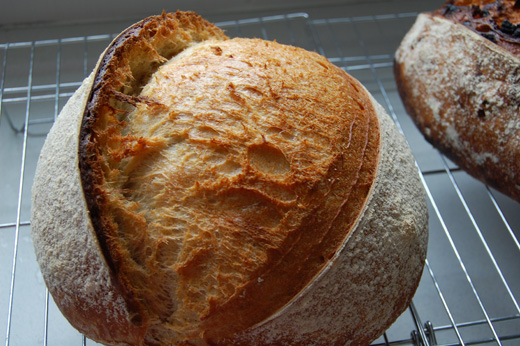
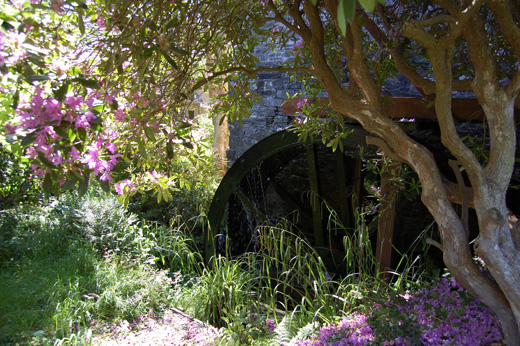
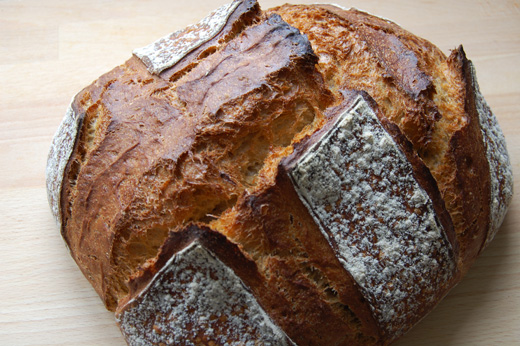



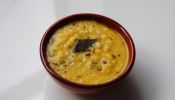


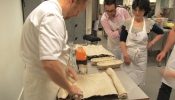














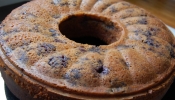


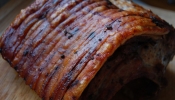

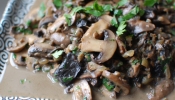

{ 11 comments }
Flat parsley is really good in Tabbouleh, when making properly with around 65% parsley the curly is a little too strong… but hey i love both!
hi Liz – I’ve never made proper Tabbouleh..that’s interesting you too think curly is too strong for that.
I prefer curly for taste and agree with your thoughts on which is stronger. I also prefer chopping curly, the flat leaf tends to clump and can be coarse at this time of year. I buy both though. I use the flat in the dipping sauce for Thai fish cakes though. Curly parsley always looks so “English” to me, whereas the flat one says ‘modern, pan Asian, designer’ to me, prob because the curly is familiar from childhood….. have a lovely weekend Az! I’m not cooking this weekend, going out!
hi Joanna – Yes…me to! I think of curly as typical English…maybe because back home we have the flat kind which apparently is the one that’s closest to the wild variety. I’m tempting Yorkshire forced rhubarb souffle this weekend! Have a fabulous weekend off my lovely! Enjoy it x
It’s not about strength for me, but I’ve always thought that flat-leaf parsley was more fragrant, somehow and it’s interesting to read that this parsley has more essential oils, so maybe that’s the reason. This year, I will grow a plant of each and use both. A stronger flavour is definitely better with parsley sauce.
My grandmother, many years ago, used to make parsley sauce from milk, flour or maybe cornflour, chopped parsley and a knob of butter, but whilst over at my mother’s the other week and cooking fish, I picked up a tub of parsley sauce which contained fish stock, white wine as well as the parsley and something to thicken. We really enjoyed this parsley sauce and it is something that I could copy and make my own fish stock.
Interesting Renee you find flat parsley more fragrant…I would go along with that with homegrown variety where you pick it quite young…the bunches I buy maybe because they’ve been in transit for days lack the pungency.
I make parsley sauce the same way as your grandmother. I’m about to make some white parsley sauce which will have the water from poaching the smoked haddock in it as well to be used in the fishpie I make.
Azelia,
I’m surprised that you don’t grow some of your own parsley – both kinds! My climate is about the same as yours (are you in South England?), and I don’t need to give my parsley any winter protection. But I’d bet that even if you did need to protect it, it would only need a few inches of leaves during the winter, and in the spring it’d jump back to life. It’s supposedly a biennial but I’ve got a flat leaf growing in my garden that’s going into year 3 – So…???
Try growing some – when they go to seed in the fall, they spread so much seed that you’ll have 5000 parsley plants in the spring for all your friends.
I have Doc…but I eat more than I can grow in my pots…don’t have place in the garden to grow so it has to be pots…last year didn’t do very well with what I grew!
Hello! I am currently growing both burly and flat leaf parsley in my garden, and I am finding that the curly leaf plants are starting to produce flat leaves. Do you know what that means? Have you had that happen?
hello, my dr. reccommend me to boil parsley leaf then i havebto drink that could help my med to dissolve my stone at my kidney…
now that i am following all post from parsley and i do believe that this parsley leaf cud destroy dat stone living on my kidney
thank you…
{ 1 trackback }